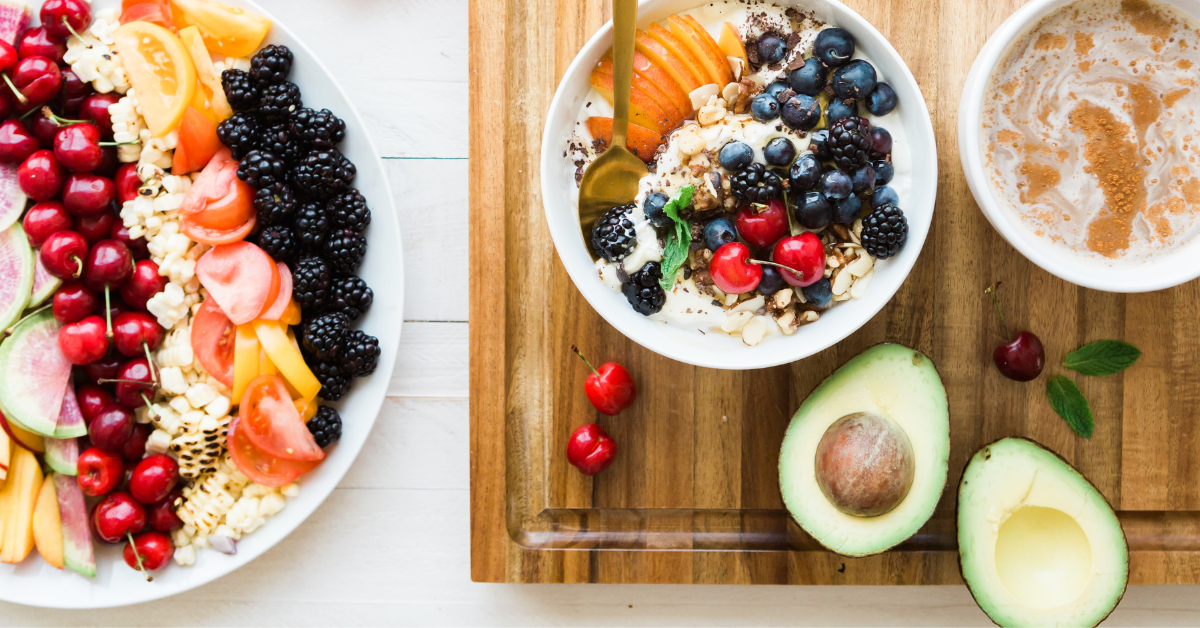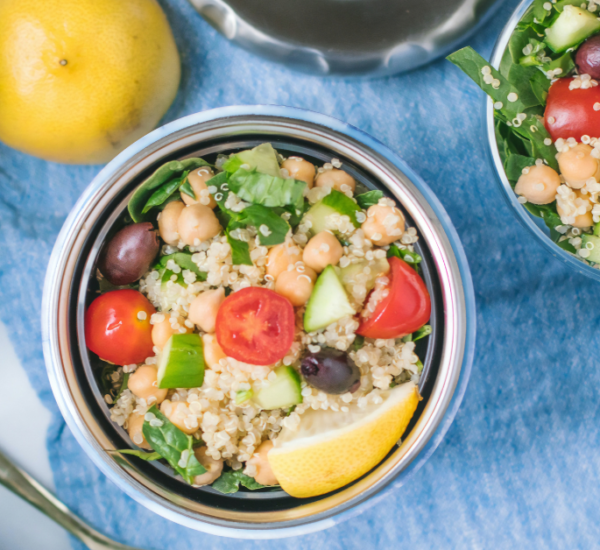It feels like a lifetime ago, but I recall a time when I was truly addicted to sugar. This may be a surprise to most people. I am a highly regarded dietitian and eat very well, yes, but there was a time in my life when the chewy and sweet not only stuck to my fingers but also tugged at my brain.
I remember being a uni student back in the 90s and my study evenings were fuelled with cups of tea with 4 or 5 teaspoons of sugar. I am ashamed to say that, but it was true. I’d go do a gym class and stop by the supermarket on the way home to buy a 3 pack of Sesame Snaps and I’d eat them all on the walk home. Let’s just say I was not studying nutrition at the time! My life was hectic and sugar laden.
Sugar and science
So it’s easy for me to understand how people can become addicted to sugar – and that it can become both mindless and habitual. I can understand because I lived it! I am happy to say I have broken my addiction, but it wasn’t easy.
Science reveals that sugary foods are linked to pleasure. They release chemicals known as opioids into the bloodstream that bind to receptors in our brain that signal pleasure. People feel much better after they have their ‘hit’. The euphoria that follows is hard to resist. Over time the brain becomes tolerant to sugar and to get that same ‘sugar high’, and more and more is needed to get that same feeling.
Also read: How to Change Your Relationship to Food
Coping with sugar withdrawal
The withdrawal from sugar is nasty. Irritability, tears, flu-like symptoms and tiredness are some of the responses people experience when cutting back on the ‘white stuff’.
The time period to overcome this can vary, but pushing through that first week is the toughest and the most defining. To make permanent change it can take as long as 21-30 days of focus and willpower.
The payoff from this month of hell is freedom. Freedom from the niggling and nagging ‘sugar bug’ and the freedom to choose good food. It’s at this point I need to stress that all sugars are not equal, and that we need to make smart choices to ensure we are fuelling our body appropriately – and not removing all the fun from food. Food should never be associated with guilt and a treat every now and again is OK. Developing a healthy relationship with all foods is critically important.
Being organised and preparing your meals in advance is also key to avoiding a sugar binge. Check out some of our recipes on the 12WBT program – a lot of them have little to no sugar, and will satisfy both your hunger and tastebuds.
Making smart food choices
Let’s talk about whole foods, and making smart choices that are naturally sweet! After all, we need to fuel our brain and replenish our muscle glygogen.
Fresh fruit
Nature’s candy! Fruit has been vilified over the last few years, but there is no reason to be scared of something so nutritious. Aim for just two serves each day – fruit makes a fabulous sweet snack and it gives your digestive system a good workout, breaking down those cellular walls!
Dried fruit
Whether it is in your un-toasted muesli or trail mix, dried fruit provides sweetness, but in a condensed sense (so watch your portions). Try not to exceed 1.5 tablespoons, or 30g of dried fruit, per day.
Dairy products
The reason dairy is in this list is because it contains lactose, or milk sugar. This is not something to be fearful of. It’s naturally occurring, but be aware that it is not specified on the nutrition panel as ‘lactose’, just sugar. Note that sugar is not added to milk, but rather it has lactose which falls into the sugar category.
Yoghurt
The range of yoghurts is huge – from bitter, all-natural varieties, to dairy based ‘desserts’, yogurts come in all forms. The best choice is to go for natural yoghurt and add freshly sliced fruit for a touch of sweetness. If you like flavoured yoghurts, be cautious! Reading ingredients lists and panels can be very useful and I always recommend going for one with less than 15g of sugar per 100g. That 15g includes the lactose and the fruit content. Any greater than that warrants another choice.
Cereal
My advice with cereals (and most packaged goods) is to read the ingredient list. If sugar is in the top three ingredients, steer clear. Go for a cereal made with whole grains and contains a good amount of fibre – at least 7g per 100g
My top tips for breaking a sugar addiction
- Stop adding sugar to tea and coffee – start by reducing it by 1 teaspoon at a time
- Read ingredient lists and shop wisely
- Make water your number one drink
- Source sweetness from whole foods, like fresh fruit
- Try sipping licorice tea or other herbal teas – ditch soft drinks and juices
- Get busy – don’t let sweets dominate your thoughts
- Swap flavoured yoghurt for natural varieties, and add your own fresh fruit
- Break habits associated with your addiction – ie. stopping to buy petrol and buying a chocolate bar
- Have snacks with a little fat or protein – ie. fruit and nuts/yoghurt, wholegrain toast with nut butter (not jam/honey)
- Eat three balanced meals each day and ensure you are satisfied
- Remove temptation from your house and workplace – no more charity chocolates and sugar laden staff morning teas
- Be organised at all times with a sensible snack and bottle of water in your bag!
If you are driven by an aggressive sugar desire and cannot get through a day without hunting down something sweet, it might be time to reduce your intake. This doesn’t mean quitting sugar – it simply means making smarter choices. Don’t label sweet foods evil or poisonous, they are simply delicious. When you can enjoy a small serve of something decadent without guilt or a tugging desire for a second, third, or fourth serving, that’s when you have truly broken the battle with sugar.















My question isn’t related to diet but the “Contact Us if you have a question” link doesn’t work. It’s great to see 12WBT staff responding to comments so I’ll take my chances. I’m desperate to get back into exercising, used to be able to run the 12km City to Surf. I have a condition that no doctors seem to be able to help with so I’m wondering if anyone else out there has the same. When I exercise and get my heart rate up I experience the most crippling abdominal pain. It’s not a stitch or anything that simple. One sports doctor said blood flows to your limbs to cool leaving the stomach/uterus area to cramp. Following her exercises didn’t help. I’ve had scans, physio etc but no-one can suggest anything. Others have suggested slight endometriosis but no-one has reported pain this bad during exercise, so probably unrelated. It’s so embarrassing to be double over on the pavement and have people ask if you need an ambulance. It can take up to 20 minutes to ease and once the pain has gone the first time I can then continue but by then the group run/class etc is over and I’m left feeling incredibly embarrassed and never go back. Some blogs suggest runners get it, stay hydrated etc, anti-inflammatories, panadine forte but nothing helps. Do any of the 12WBT staff or participants have any experience in this area? I’m desperate for answers and solutions.
Hi Rochelle – You poor thing Rochelle – please know you are not alone Lovely – we have seen a few similar complaints amongst our members in previous rounds. Abdominal cramping with high impact exercise such as running is commonly linked to hydration or diet. If you are dehydrated you are more likely to experience cramping; however gulping water before your run can have the same affect, so just try little sips before, during, and post run to avoid this, and remember to increase volumes in the hotter weather.
If you eat prior to exercising, try to leave at least 30 minutes after eating before you head off…longer if possible! High fat/protein/carb intake prior to intense exercise can increase the incidence of cramping, so aim for smaller portions with a bit of breathing space in between 🙂
Pushing yourself too hard, or even just the hard jarring associated with this type of exercise, can result in a poor breathing technique – the internal organs can bounce around a bit and the diaphragm may not function as well as it should, impacting on lung expansion. The subsequent result of decreased oxygen circulating in the blood can also lead to stomach cramps.
Slowing down – all the way to a walk if you need to – is wise if you start experiencing cramping during exercise. Take little sips of water throughout your workouts and focus on drawing in deep belly breaths (where your stomach pushes out a little) with slow exhalations to see if this keeps symptoms under control. You might also like to consider switching around your exercise choices. A short, sharp kettle bell or a boxing workout can give you an intense workout while also boosting your cardio fitness – but without all that bouncing around! Why not give these a shot to see if things improve! Hope this helps 🙂
Leila
12WBT Support Crew
Good tips, i only take 1tsp of rS sugar once a day in my tea.hope thats not bad.
I “gave” up my crazy sugar intake around 6 weeks ago now!! Nothing happened, nothing happened, nothing happened….. for 5 weeks… I didnt give up and at around 5 weeks I suddenly dropped 3 kgs!!! Stick at it!!!
OMG-a 3 pack of sesame snaps after a gym class!!!!!! And you think that makes you understand what it’s like to be a sugar addict????? Seriously???????
FFS- take away the gym class and swap the snaps for a family block of choc and i might be able to relate.
No wait-that’s my life.
I have just made the decision to lose weight and I need to develop a nutritional menu and cut out sweets and fats from my diet. I’ve increased my water intake and cutting out sugars and drinking milk coffee and milk shakes.I’ve lost 3 kgs so far and value the advice your support team provides.It’s a slow process but I’d like to be slow and steady and win the race.Thanks for all your help.
Isn’t (low fat) yoghurt a protein? I’d swap that for the protein shakes as they contain a lot of hidden sugar. I also often carry with me a small tin of tuna in spring water. Protein packed and healthy!! I try and stay away from anything that’s un-natural and comes in packaging – ready for consumption. Drink plenty of water and carry a banana. They really help me get through an afternoon when all I want to eat is chocolate.
Hi Jules,
No food is ever just one nutrient. Low fat yoghurt is a great source of protein however, it also contains good amounts of fat and sugar… all natural and nothing to worry about. It sounds like you have snacking and resisting sugar-laden foods under control – that’s fantastic!! 🙂
Leila
12WBT Support Crew
So you had the scan, and they said cut the soy to lose weight, and you didn’t (cut the soy), and so you haven’t lost the weight…..Ahhhh???
Hi, thanks for a great article, have battled sugar addiction for years!!!! Have now managed to cut sugar in coffee, and dropped to 1 teaspoon in tea. Love a biscuit cake etc, used to have one every day!!!! How often would you say you could have one for a treat??
Hi there,
It’s great to hear you’ve made so many positive changes – congrats! Keeping a ‘treat’ to once a week or fortnight is a good thing to aim for. It may be that you ‘make a date with your cake’ – go out with a friend for coffee and cake and really take the time to enjoy and savour each mouthful.
Leila
12WBT Support Crew
Hi there, I have been going through menopause for quiet a long time now! From a pear shape I have become an apple shape and have lost my waist and put a lot of weight around my stomach since I become menopausal ! I have been told by my doctor to eat more protein , what would you suggest say for example for breakfast ? Also what protein shake without any sugar would you recommend please.I also have sugar craving in afternoon !
Thank you ,
Dominique
Hi Dominique,
Menopause definitely has a major impact on a woman’s body hormonally, and this can impact substantially on what you weigh and the shape of your body… as you’ve discovered. Women who have never before had to watch their weight, suddenly find that they balloon out, as well as the myriad of other lovely physical ailments like hot flushes, fatigue and mood swings!
If your doctor has suggested eating more protein, you can easily do this through adding more protein-based wholefoods into your day. Unless you’re working out hard each day, a protein shake is not something that is necessary. For example, you could include eggs, baked beans, cottage cheese or yoghurt in your breakfast; tofu, chicken, eggs, legumes, meat or fish in your lunch and dinners. For snacks that keep you full and hit the cravings you have, choose foods that are high in fibre and protein – an apple with some peanut/almond butter, natural yoghurt with berries, veggie sticks with hummus, avocado on rice thins, etc. We have some fantastic recipes in the 12WBT Recipe Index… you can have a sneak peak here – https://www.12wbt.com/nutrition/recipes
Regardless of how your transition through menopause tracks, eating a nutritious, well balanced diet based on as natural and unprocessed foods as possible, combined with consistent exercise that includes weight bearing (to keep your bones strong) and fitness (to keep your heart healthy) components, is going to help smooth the ride. The 12WBT Meal and Exercise Plans are designed to give you all that you need… you may want to come and try a round with us and see how it goes for you!
All the best,
Leila
12WBT Support Crew
Hi There
I had a body composition scan a couple of months back and was given advice to increase my protein intake and cut out my morning soy milk coffee in order to build more muscle mass and drop body fat. I have 1 x protien shake post workout and am using Optimum Nutritian Gold 100% Whey Protien mixed with water. I have not kicked the morning small soy latte! I’m having difficulties in losing the belly fat, I would only have 2-3 kilos to lose. I guess I wanted to know whether the protein shake or the soy milk would be the thing that is inhibiting my weight loss?
Thanks
Ange
Almond milk contains protein (assuming you dont have any allergies) also has less calories.
Hi Ange,
Often it’s not one thing that is helping/inhibiting our weight loss efforts so probably neither your soy coffee or protein shake are to blame. Aim to take a more holistic approach to this – it could be other things in your diet, aspects of your training, hormones, stress levels, quality of sleep, hydration, etc. As you can see, there are so many factors at play here. We’d suggest having a chat to your doctor, personal trainer or dietitian for some more specific investigations and advice.
The Team here at 12WBT are also here to help as much as possible. 🙂
All the best,
Leila
12WBT Support Crew